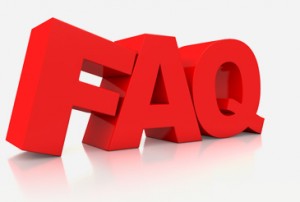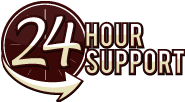
- Why would I want a personal Web site?
There are many reasons to have a personal Web site. Think of it like an on-line newsletter about you. It is a great way to keep family and friends updated and to share information about your hobbies, favorite entertainers, jokes, or anything else of interest. If you have a digital camera or scanner, a Web site makes it easy to share pictures. Rather than email separate picture files, you can post the photos on your Web site, where family and friends can review them at their leisure.
- Can I put up information about my business?
Personal Web space is for personal information only. It is not meant for advertising a business, nor is it a good way to do so. Personal Web pages use our domain name, which is not appropriate for your business venture. We have reasonably priced Commercial plans available, which allow you to have both your Web site and your email address at your own domain. If you are interested in a Web page for your business, call our Sales office for more information.
- How do I create a Web page?
You create Web pages with an HTML editor. These programs are fairly easy to use, often not much different than using a standard word processor. You may have an HTML editor and not realize it. Some versions of Netscape come with Netscape Composer, which is a simple HTML editor. You can learn more about web editor on 24hoursupport and view links to downloading web editors from the Internet or links to purchase web editing software.
- I have my HTML Editor. What about designing the page?
HTML lets you do some pretty nifty things, but be careful not to go overboard. For example, blinking text is interesting for about 2 seconds, then it becomes very annoying. If you want text to stand out, try using bold or a different font color, instead. Do not use too many different colors on one page, and make sure that the font color contrasts with the background color so that people can read the text. Also, do not use too many different font styles and sizes. Use a medium-size font for the body, a slightly larger font for headings, and something a little bigger than that for the page title. Look at the page with a critical eye and ask yourself: “If I were someone else, would I find this page pleasing to the eye and easy to read, or annoying and not worth the effort?”
- How many pages can I have on my Web site?
You have 20 MBs (about 20,000 KBs) of space, which can hold many Web pages. Pages that are all text are only a few KBs. A picture should be less than 100 KBs-much larger than that, and it may be slow to download. If your average page has text and a picture or two, you should be able to fit 100 or more pages on your Web site.
- How should I organize my Web site?
Most people do not like to read Web sites that are one long page. Before you begin, organize your content into multiple sections based on the topic, such as Pictures, Favorite Web Sites, Hobbies, My Family, etc. The first page of your Web site is called the “Home” page. Your Home page should welcome the visitor and briefly describe the site’s content (which is usually about you). Your Home page will also contain “links” or buttons that will take people to the other sections of your Web site. Each section or page you put up will be a separate file, and it will have a different file name.
- Does it matter what I name my files?
You must name your Home page index.html because the server looks for this file name when someone types in your Web address. Other than that, you name your files as you wish, although descriptive file names will help you later. For example, pictures.html is better than page1.html. Most HTML editors add either the .html or .htm extension automatically.
- How do I add pictures to my web pages?
Graphics with a JPG or GIF extension are recommended for use on your web site. You must ensure that your graphics are in the same directory with the HTML file, or referenced accordingly, in order for the graphics to display. For more information on adding graphics, see CNET or About.com.
If you like, you can give visitors to your web site the ability to click on a graphic to view another page. You create a hyperlink on the graphic itself, which automatically takes your visitors either to another web page or to another part of the same web page. To create these graphics, use MapEdit or another image map editor. The .MAP file, which controls the coordinates of the clickable region of your graphic, can be located anywhere along your path except in a CGI-BIN.
- Once I have designed my pages, how do I get them into my Web space?
You will need something called an FTP program to “upload” or transfer the HTML files from your local hard drive to our Web server. You can learn more about where to find FTP programs and how to use them on 24HourSupport.com.
Once you have an FTP program, you can use it to transfer your files to our server at ftp.ourdomain.com (where ourdomain.com is the same as the domain after the “@” in your email address). You will use your email User ID and Password when transferring files. Place your Web files in the html directory. If you experience problems uploading pages to your site, refer to our troubleshooting page.
- What is my Web Page address?
Your Web page address is , where “username” is the login name of your main email address, and ourdomain.com is the same as the domain after the “@” in your email address. The ~ character can be found above the TAB key on most keyboards.
Can you help me with my Web Page?
While we do not provide support for HTML or Web page design, we can assist you if you need help transferring your files up to the server. If you need this type of assistance, you can call our Technical Support department or email helpdesk@24hoursupport.com.
